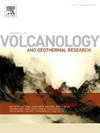Evolution of the eruptive activity at Stromboli (Aeolian Islands - Italy) during the last 4 millennia. A tephrostratigraphic investigation on the early-phase of Recent Stromboli Eruptive Epoch
IF 2.3
3区 地球科学
Q2 GEOSCIENCES, MULTIDISCIPLINARY
Journal of Volcanology and Geothermal Research
Pub Date : 2025-03-03
DOI:10.1016/j.jvolgeores.2025.108308
引用次数: 0
Abstract
Stromboli is famous for its persistent explosive activity that has been studied from various perspectives over the last century. By contrast, there is controversial information about the volcanic history regarding the period between 6000 years ago and the onset of the present-day activity.
Here, we present a comprehensive tephrostratigraphic investigation of the pyroclastic sequences that predate the onset of the present-day activity. This study integrates field observations, sedimentological analyses and radiometric 14C dating, together with detailed textural, petrographic and geochemical characterisation of juvenile clasts. Specifically, we document two superimposed volcaniclastic sequences, Member A and Member B, consisting of sub-conformable pyroclastic beds of lapilli and ash, interspersed with massive epiclastic deposits. While these sequences exhibit similar lithological features, indicating comparable eruptive dynamics, they are distinguishable for glass composition and chronostratigraphic framework.
In particular, a major change in the glass composition of the magma occurred after 1780 years ago, with a shift from high-K calc-alkaline (HKCA) to shoshonitic (SHO) affinity, composition that still persists in the present-day. We recognise four distinct eruptive periods with HKCA composition within Member A and two eruptive periods with SHO composition within Member B, both predating the onset of the present-day activity. Also, within Member A, we observed the earliest coexistence and mingling of two end-members with different texture and composition. This suggests that the feeding system of Stromboli could have been very similar to the present-day since at least 3200 years ago. It likely comprises two distinct magma bodies at different depths containing magmas with different compositions and porphyritic characteristics that occasionally interact prior to eruptions.
Our findings contribute to a comprehensive reconstruction of Stromboli's volcanic history and hold practical significance for anticipating and mitigating potential future volcanic events.
在斯特隆博利(意大利伊奥利亚群岛)爆发活动的演变在过去的4000年。新近斯特龙博利火山喷发期早期地层研究
斯特龙博利火山以其持续的爆炸活动而闻名,在上个世纪,人们从不同的角度对其进行了研究。相比之下,关于6000年前到现在火山活动开始之间的火山历史,有争议的信息。在这里,我们对早于现今活动开始的火山碎屑层序进行了全面的地层研究。本研究综合了野外观测、沉积学分析和放射性14C测年,以及详细的幼年碎屑结构、岩石学和地球化学特征。具体来说,我们记录了两个重叠的火山碎屑层序,A段和B段,由亚整合的火山碎屑层组成,其中夹杂着块状的火山碎屑沉积。虽然这些层序具有相似的岩性特征,表明类似的喷发动力学,但它们在玻璃成分和年代地层格架方面是可区分的。特别是在1780年后,岩浆的玻璃成分发生了重大变化,从高钾钙碱性(HKCA)向高钾钙碱性(SHO)转变,这种成分至今仍然存在。我们发现在会员A内有四个不同的喷发期,由HKCA组成,而在会员B内有两个喷发期,由SHO组成,都是在现今活动开始之前。此外,在成员A中,我们观察到最早的两个不同织构和组成的端元共存和混合。这表明,至少在3200年前,斯特龙博利的喂养系统可能与现在的喂养系统非常相似。它可能由两个不同深度的岩浆体组成,这些岩浆具有不同的成分和斑岩特征,在喷发之前偶尔会相互作用。这些发现有助于全面重建斯特龙博利火山历史,对预测和缓解未来可能发生的火山事件具有现实意义。
本文章由计算机程序翻译,如有差异,请以英文原文为准。
求助全文
约1分钟内获得全文
求助全文
来源期刊
CiteScore
5.90
自引率
13.80%
发文量
183
审稿时长
19.7 weeks
期刊介绍:
An international research journal with focus on volcanic and geothermal processes and their impact on the environment and society.
Submission of papers covering the following aspects of volcanology and geothermal research are encouraged:
(1) Geological aspects of volcanic systems: volcano stratigraphy, structure and tectonic influence; eruptive history; evolution of volcanic landforms; eruption style and progress; dispersal patterns of lava and ash; analysis of real-time eruption observations.
(2) Geochemical and petrological aspects of volcanic rocks: magma genesis and evolution; crystallization; volatile compositions, solubility, and degassing; volcanic petrography and textural analysis.
(3) Hydrology, geochemistry and measurement of volcanic and hydrothermal fluids: volcanic gas emissions; fumaroles and springs; crater lakes; hydrothermal mineralization.
(4) Geophysical aspects of volcanic systems: physical properties of volcanic rocks and magmas; heat flow studies; volcano seismology, geodesy and remote sensing.
(5) Computational modeling and experimental simulation of magmatic and hydrothermal processes: eruption dynamics; magma transport and storage; plume dynamics and ash dispersal; lava flow dynamics; hydrothermal fluid flow; thermodynamics of aqueous fluids and melts.
(6) Volcano hazard and risk research: hazard zonation methodology, development of forecasting tools; assessment techniques for vulnerability and impact.

 求助内容:
求助内容: 应助结果提醒方式:
应助结果提醒方式:


